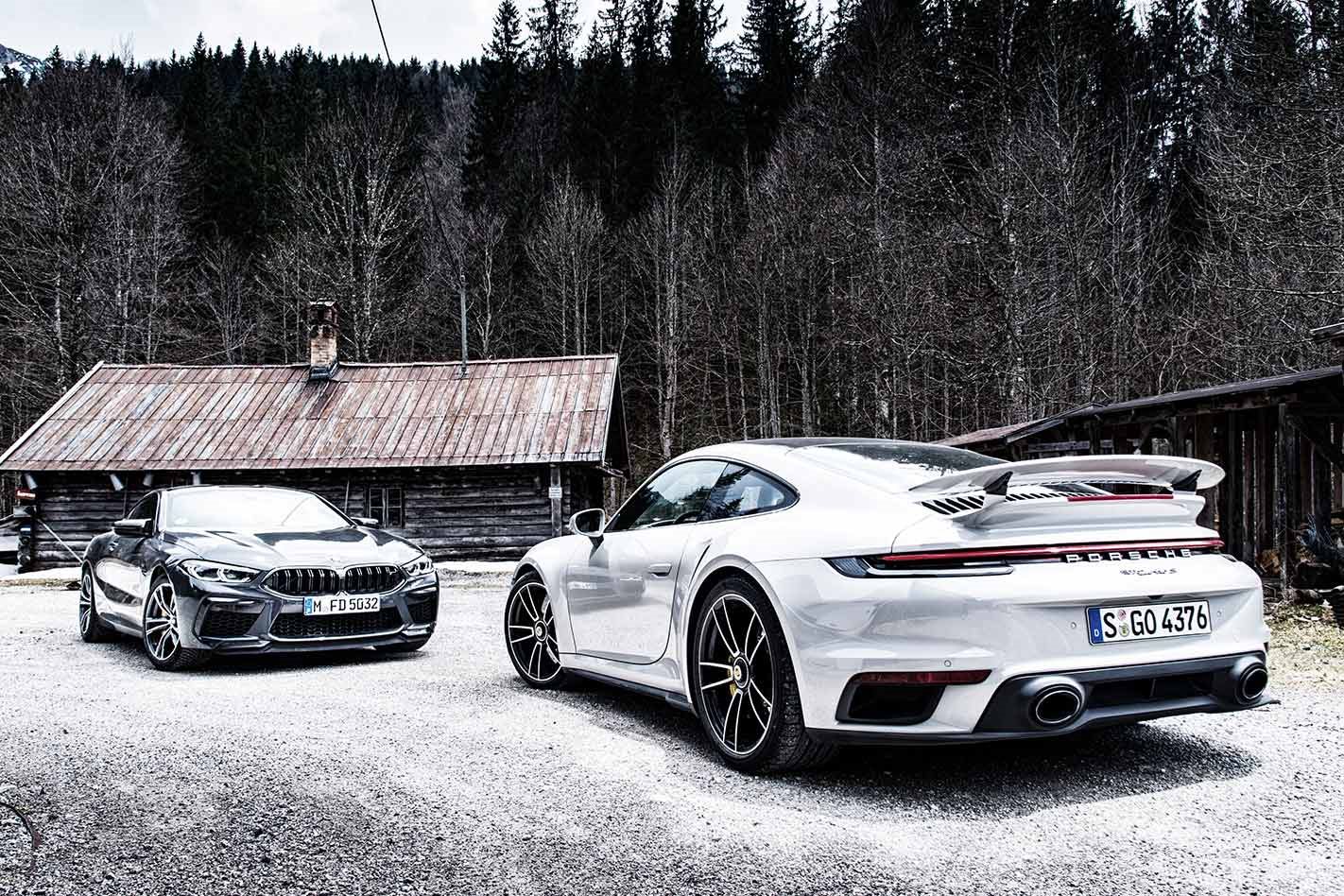What is the fundamental difference between a sports car and a grand tourer? The design, the number of seats, engine location, power and performance are all worthwhile guesses, but incorrect. It is the driving position that differentiates between the former and the latter. In a proper sports car, the body-hugging seat must be mounted as close to the road as possible, so that if there were a hole in the floorpan the driver could reach down and touch the tarmac. Hip height is the number one decider when it comes to the intensity of interaction and explains why only a handful of grand tourers handle like sports cars.
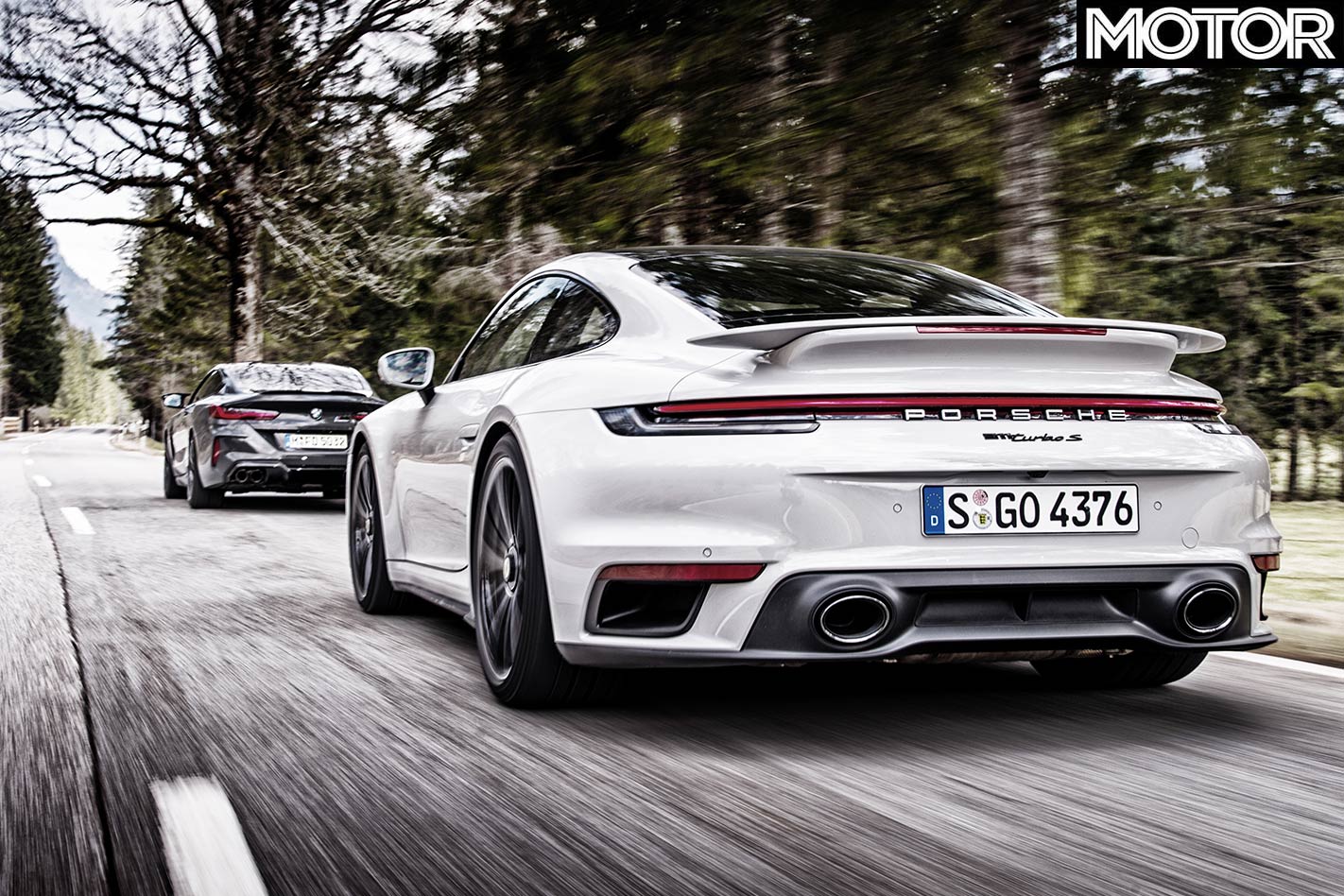
The 911 has belonged to the sports car tribe since its arrival on the scene almost 60 years ago. Nevertheless, the Turbo, thanks to all-wheel drive and a catalogue of comfort and convenience items, has over time seen the sports car and gran turismo orbits intersect, evolving into an incredibly effortless high-speed autobahn eater. Porsche’s new sports car boss, Frank Walliser, the wiry engineer who fathered the 918 Spyder and the Le Mans-winning 919 Hybrid, is determined to make future 911s even more focused and driver-oriented, and this includes the 992 Turbo S. “I feel we have steered the 992 Turbo fractionally more in a back-to-the-roots direction,” Walliser told MOTOR. “To do so, even little things helped: stiffer joints, harder rubber bushings, tighter attachment points, modified spring and damper calibrations.” Walliser and his team may have over-achieved, reversing the trend to an extent that a Turbo GTS could be warranted.

In essence, the BMW M8 is a short, nimbler and marginally lighter M5, an evolution of the F12 6 Series. It’s a formidable base, as the M5 is a top-rung performance sedan, but even in Competition guise the M8 is going to have its work cut out in a sports car head-to-head with the 911. Blame physics. The BMW is 332mm longer, 60mm taller and carries an extra 245kg. Its 4.4-litre twin-turbo V8 might have the benefit of an extra 650cc and two cylinders compared to the 911’s 3.8-litre twin-turbo flat-six, but the spec sheet reveals an 18kW/50Nm deficit. Combine the two and the Porsche has less mass and 291kW/tonne to motivate it compared to the M8’s 244kW/tonne. And it’s for weight reasons the 911, at least, spurns any form of hybridisation – not even a 48-volt mild hybrid system like that in the Panamera. “The benefits of partial electrification are marginal compared to the complex weight, packaging and cost issues,” explained Walliser.
As such, the big Beemer’s best bet at victory appears to be in the providing of crushing day-to-day performance. On the autobahn it excels, displaying commendable poise and composure even through long sweepers at warp speed. The ride is almost cushy, the multi-talented chairs cosseting, stability unwavering and that monster V8 always provides a creamily effortless rate of progress.
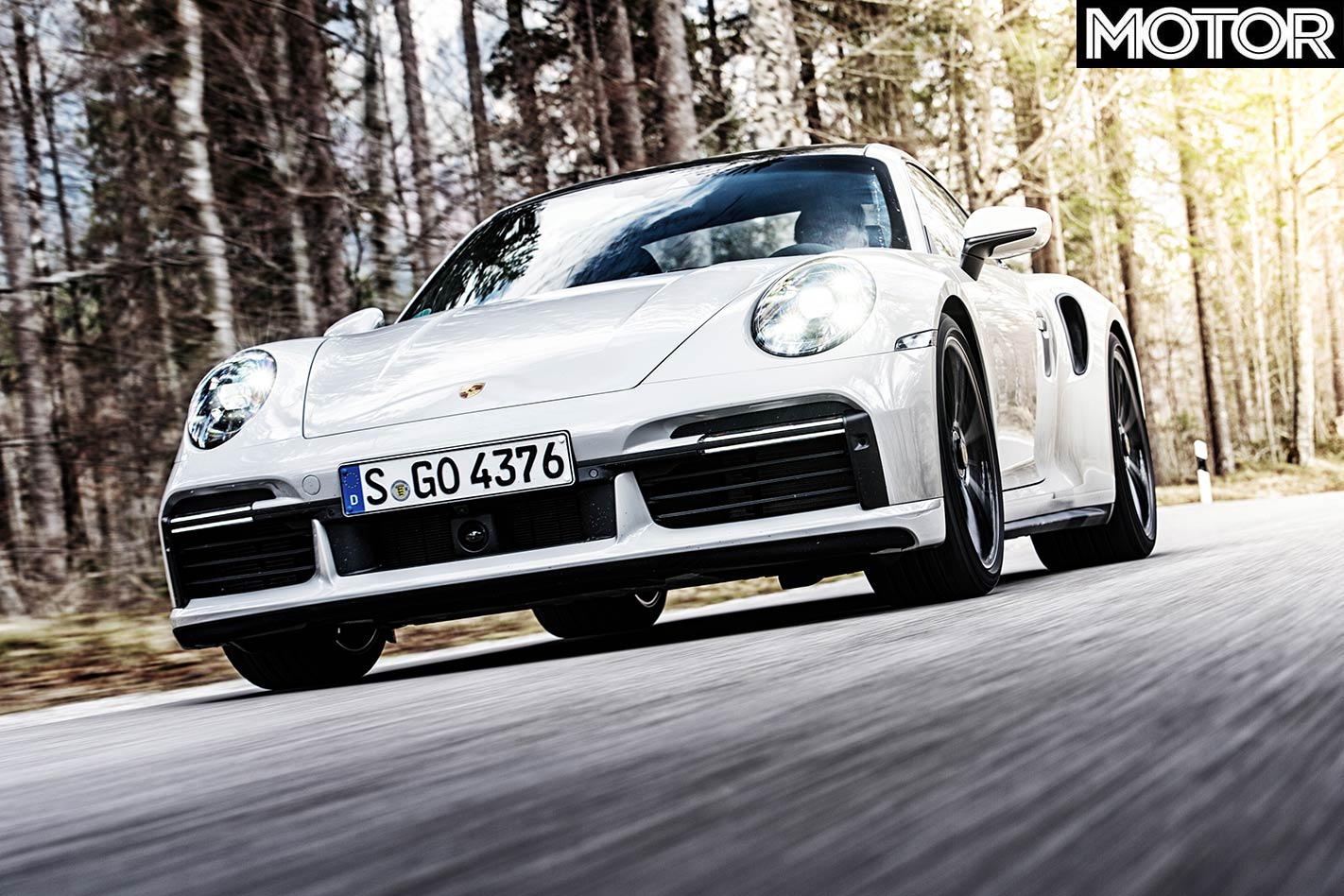
Life isn’t as relaxed in the Porsche. Even with the drive selector in Normal, the optional sports suspension provides more road information, thumping over expansion joints and repair patches, the dry-weather focused tyres (255/35 front; 315/30 rear) erode confidence on wet surfaces and carpark manoeuvres are met with judders of protest as the front wheels skip across the tarmac.
It is possible to make the 992 Turbo S draw in its claws; just leave it in Drive and don’t touch the rotary drive controller. This approach does wonders for fuel consumption and the health of your licence, but it’s barely more exciting than taking the bus. A brief twist from Normal to Sport changes everything: throttle response, gear shift points, exhaust note, damping stiffness and the driver’s pulse rate. For those in need of more excitement, there’s Sport Plus, but for most it will be best left for the track. One more click activates Porsche’s Individual mode, a user-defined combination of settings. Manual PDK mode explicitly avoids automatic upshifts, even when the rev limiter is frenetically hammering at the 7000rpm mark.
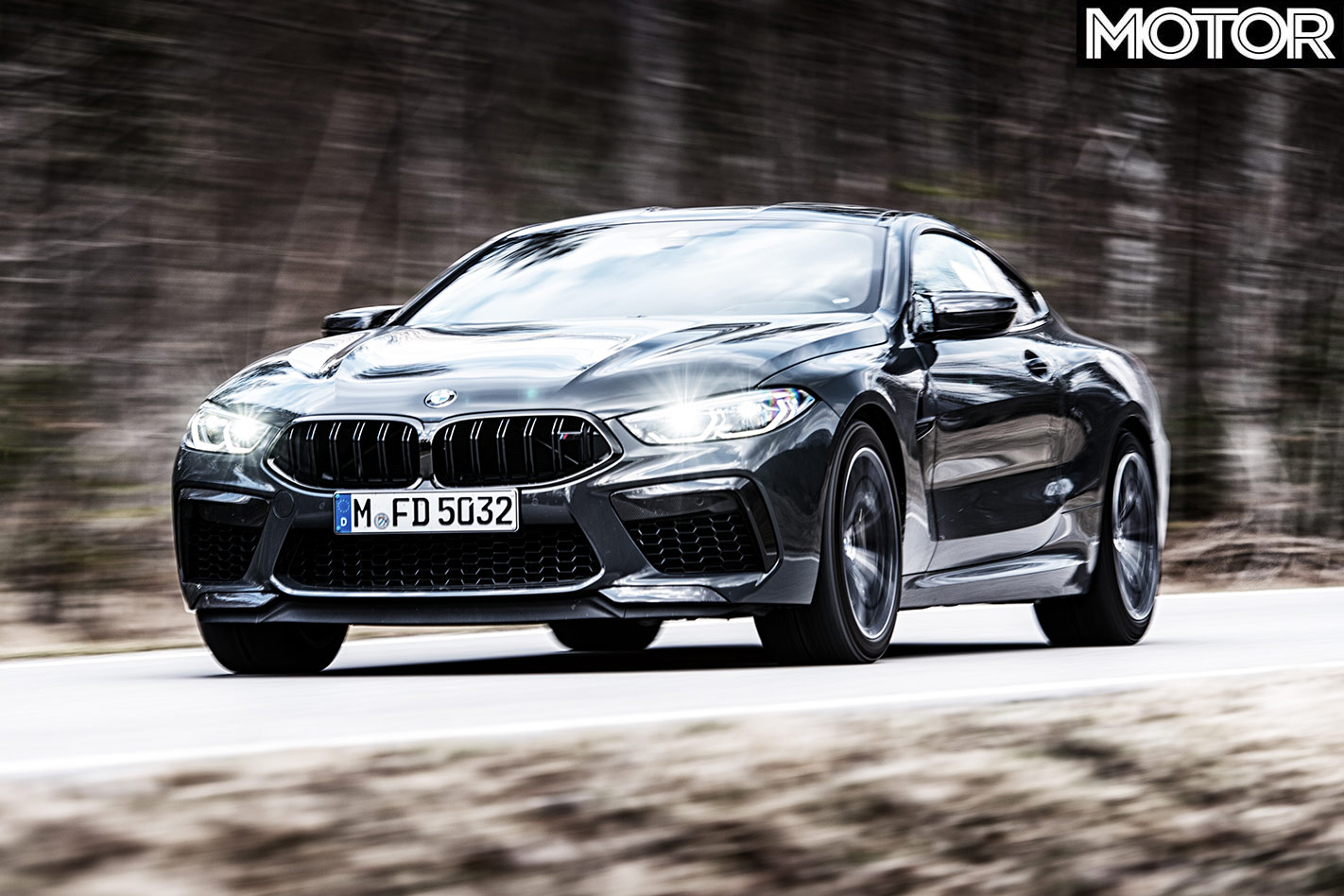
BMW takes things one step further by allowing two combinations of settings to be saved using the fire-red steering wheel toggles marked M1 and M2. Engine and transmission operate in Efficient, Sport or Sport Plus modes. The three tuning stages of the dampers are Comfort, Sport and Sport Plus. Brakes and steering each offer a choice of Comfort or Sport. The xDrive system can be set in 4WD, 4WD Sport or 2WD. Stability control is available in at least three stages. The standard M Sport exhaust is even more brutal in Sport Plus.
Modern supercars are high-tech bombshells conceived by cream-of-the-crop mechanical engineers and top-notch software specialists, and these flagship coupes are no exception. Trouble is, the target audience has a long history of struggling with such complexity; dealers we contacted confirmed that a large percentage of cars come in for their first service still running the original delivery settings. It could be a lack of awareness, information or training, but maybe it’s simply wishful thinking that the owner of an M8 Competition is dying to calibrate thirteen different performance parameters before firing up the engine.
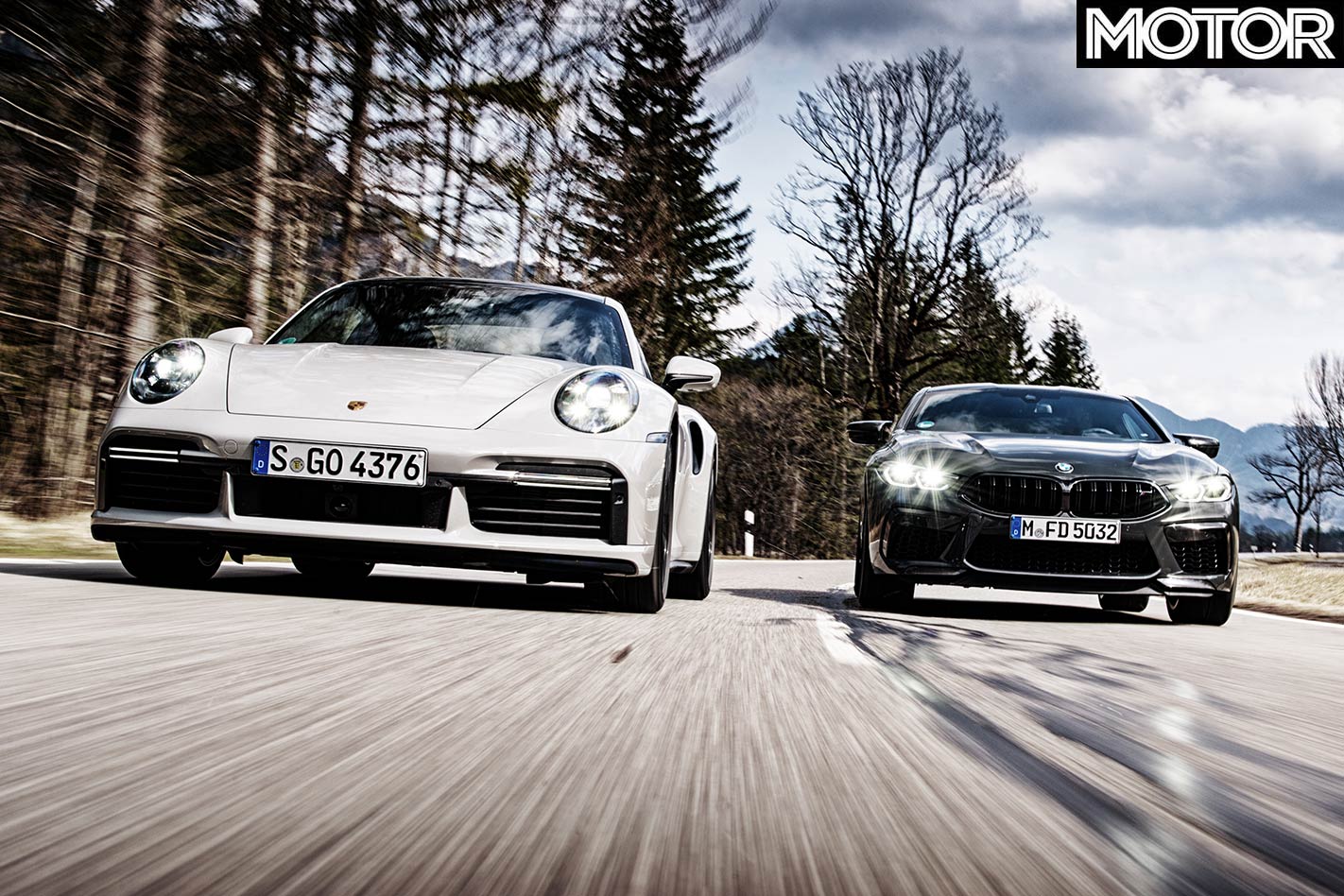
Not that the Porsche is some back-to-basics analogue machine. The original 911 Turbo didn’t even have a fifth gear let alone any driver aids, but the 992 offers PASM, PDCC, PSM, PCCB, VTG, PTV, PDK, PDLS and PAA, covering everything from a self-shifting gearbox to active anti-roll bars to torque vectoring differentials to carbon-ceramic brakes to active aerodynamics. The latter extends and retracts the larger front air dam, can selectively block the radiator and air intake apertures and vary rear spoiler angle. At low to medium speeds and through all but the very fastest of corners, the wingwork is set for maximum downforce; only above 250km/h does drag reduction become a priority. Meanwhile, the tech continues as larger, symmetrical turbos spin in opposite directions on each side of the car to improve gas-flow, and incorporate computer-controlled wastegates for finer boost control.
What remains constant regardless of the drive mode selected is the feel of the steering and brakes, so there are no nasty surprises at the limit. In the BMW, the steering is fine in Comfort but heavier and somewhat syrupy in Sport, while selecting the same for the by-wire brakes makes them act a tiny bit faster, but unless you keep switching between settings the difference is marginal.
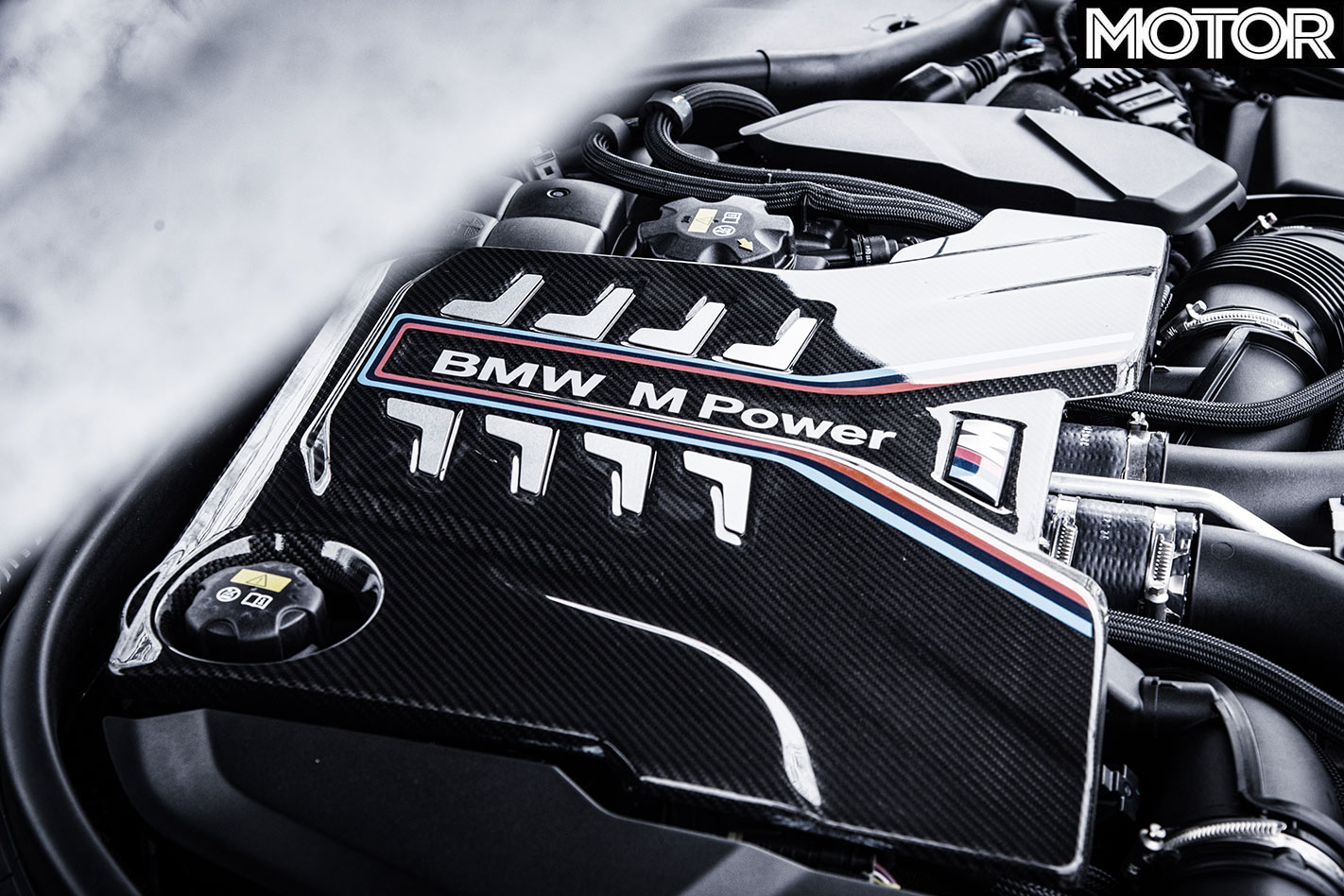
Neither car lacks for performance. Both have fascinating engines and remarkable transmissions. The M8 defies its mass to jet to 100km/h in 3.2sec and on to 200km/h in 10.6sec, topping out at 305km/h. It’s a certified missile, yet that will be scant consolation to the driver as they watch the Porsche disappear into the distance. The 911’s near-50kW/tonne power-to-weight advantage manifests itself in vastly superior straight-line performance, bringing up 100km/h in just 2.7sec and 200km/h in 8.9sec. Top speed remains 330km/h, achieved in sixth, the final two gears used as overdrives.
The BMW’s extra mass only becomes a greater handicap in the twisties, where it must be constantly accelerated, stopped and thrown around corners. Pressing on results in ever more roll and pitch, with every greater body movements eroding confidence, though it looks more dramatic from outside than within. It always feels much bigger and bulkier than the Porsche and is too heavy with insufficient balance to shine on B- and C-roads. In contrast, the 911 has cat-like responses, cornering grip that verges on the unreal and monstrous brakes – 420mm carbon-ceramic discs with 10-piston calipers up front – that vanquish speed like the arrestor cable on an aircraft carrier. A 992 Turbo S at full speed is a physical and mental assault.
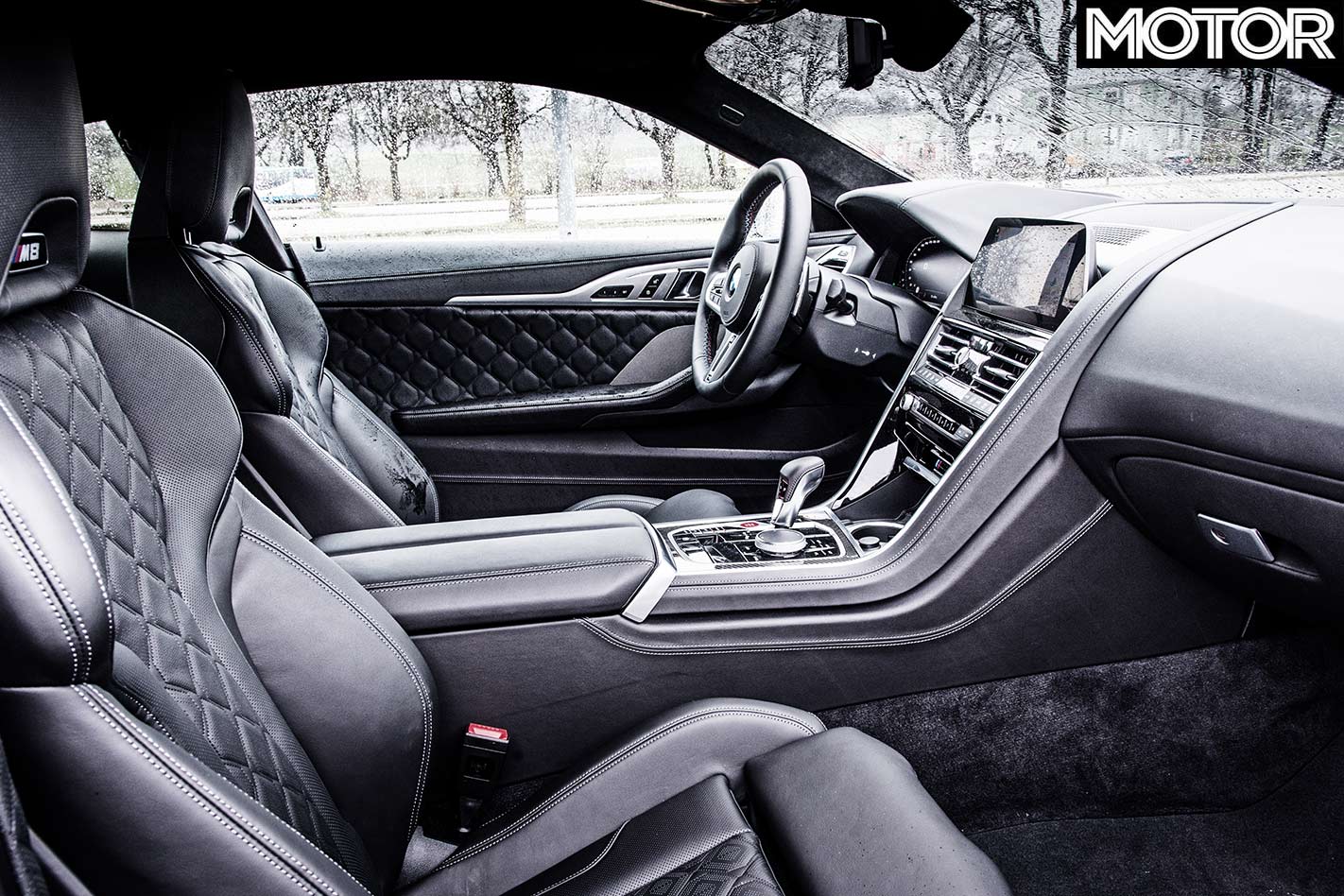
Yet it’s also the more practical machine. The M8’s rough road ride comfort is sub-par and, like the old 6-Series it effectively replaces, its packaging is abysmal. It’s 332mm longer than the 911 yet the rear seats are way too small for adults and restrict the adjustment range of the front occupants, while accessing the luggage area is awkward. The cabin is surprisingly cramped given its external dimensions, too. Swapping into the Porsche is like stepping from a shady cove onto a brightly lit stage.
In theory the M8 should be brilliant. After all, the M5 on which it’s based has shone in a variety of different super sedan shootouts, including a podium at our own Performance Car of the Year 2019. BMW presents the M8 as a precision tool, not an enabler of hooliganism. Which is a shame, because the irresistible 750Nm torque summit from 1800-5600rpm is perfectly capable of initiating controlled drifts in 4WD Sport and sending up enough smoke to darken the blue sky in 2WD.
The M boys could have cobbled together a de-contented rear-drive M8 CSL with only two seats and without all-wheel drive, but we’re told the market for such a car is too small to justify the investment. Instead, they opted for an all-in high-tech model featuring M-specific upgrades for aerodynamics, suspension, steering, brakes and drivetrain.
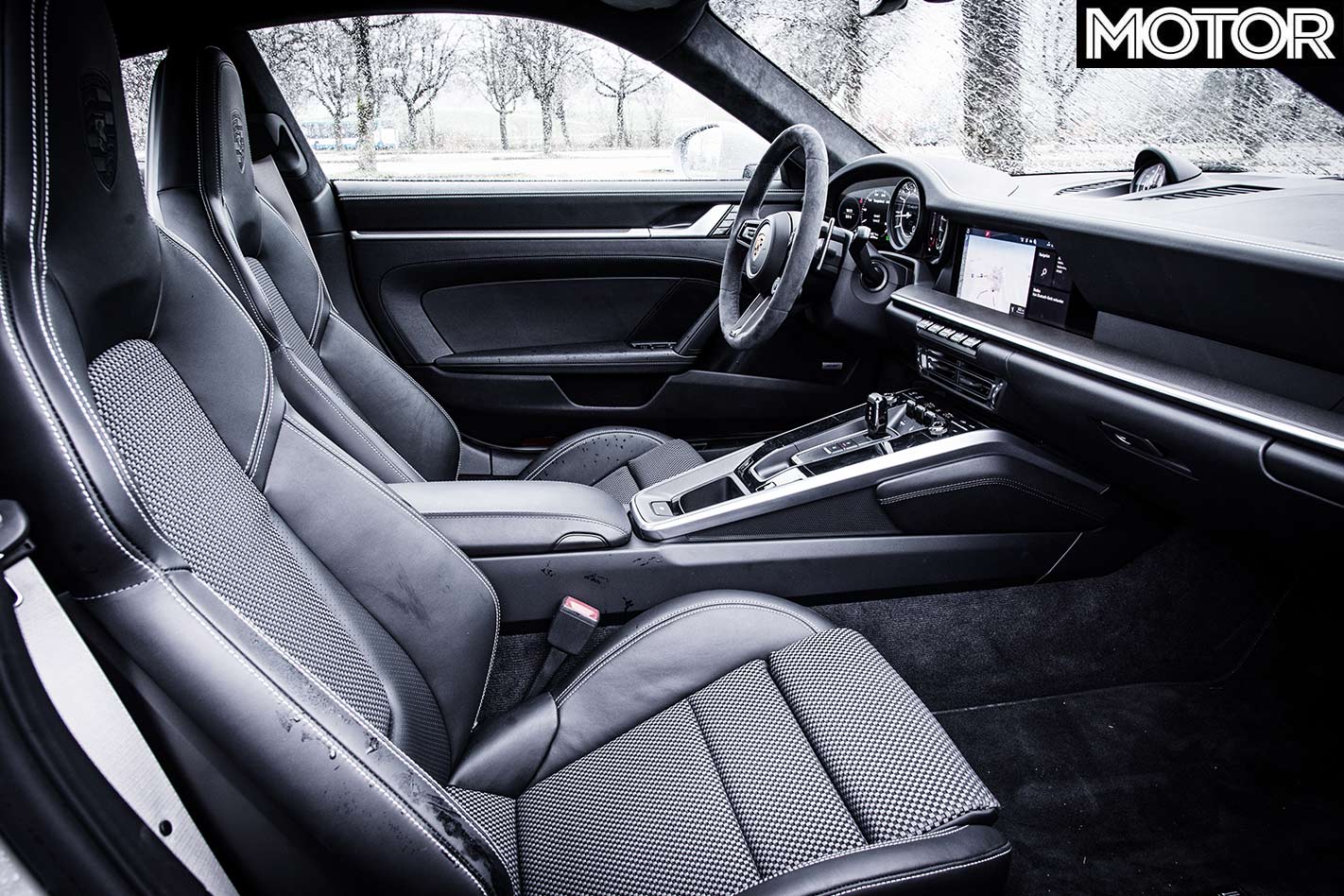
On your favourite stretch of challenging road, the BMW’s sports car genes show their worth over a traditional GT. While it is notably quicker than, say, the Aston Martin DB11 V8, it lacks that special sense of occasion. Similar money buys a Mercedes AMG GT R, a superior track weapon and much more of a proper sports car. In the final analysis, the closest rival is perhaps the new Bentley Continental or, money no object, the Ferrari GTC4Lusso V8. But what it’s not is a 911 beater. Perhaps it shouldn’t expect to be given it undercuts the flagship 992 by $120,000, but ever since M boss Markus Flasch described the uber-coupe as “BMW’s supercar” and a “Porsche Turbo killer”, expectations have been raised accordingly. Expectations that have failed to be met. The Porsche is not only convincingly the more involving sports car, it’s also – true to its legacy – the more impressive all-rounder.
BMW M8 Competition specs
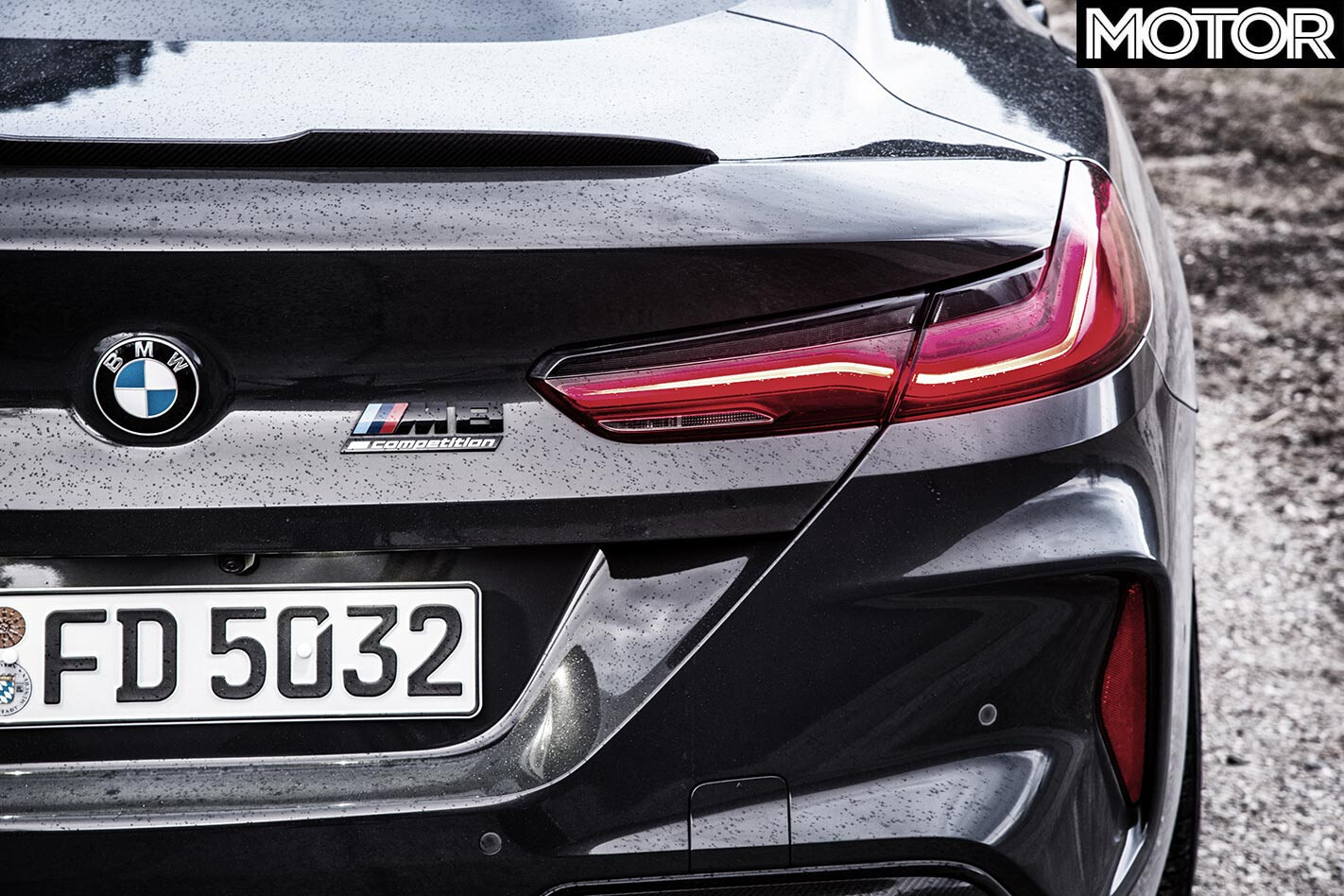
Body: 2-door, 2+2-seat coupe Drive: all-wheel Engine: 4395cc V8, DOHC, 32v, twin-turbo Bore/stroke: 88.3 x 89.0mm Compression: 10.0:1 Power: 460kW @ 6000rpm Torque: 750Nm @ 1800-5600rpm Weight: 1885kg Transmission: 8-speed automatic Power-to-weight: 244kW/tonne Suspension: Double wishbones, coil springs, adaptive dampers, active anti-roll bar (f); multi-links, coil springs, adaptive dampers, active anti-roll bar (r) L/W/h: 4867/1907/1362mm Wheelbase: 2827mm Tracks: 1627/1632mm Steering: electrically assisted rack-and-pinion Brakes: 400mm ventilated/drilled carbon-ceramic discs, 6-piston calipers (f); 380mm ventilated/drilled carbon-ceramic discs, 4-piston calipers (r) Wheels: 20 x 9.5-inch (f); 20 x 10.5-inch (r) Tyres: 275/35 ZR20 (f); 285/35 ZR20 (r); Michelin Pilot Alpin 4 Price: $352,900 PROS: Monster powertrain; slick drivetrain; high-speed manners CONS: Poor packaging; iffy ride; too heavy; premium over M5 Star Rating: 4 out of 5 stars
Porsche 911 Turbo S specs
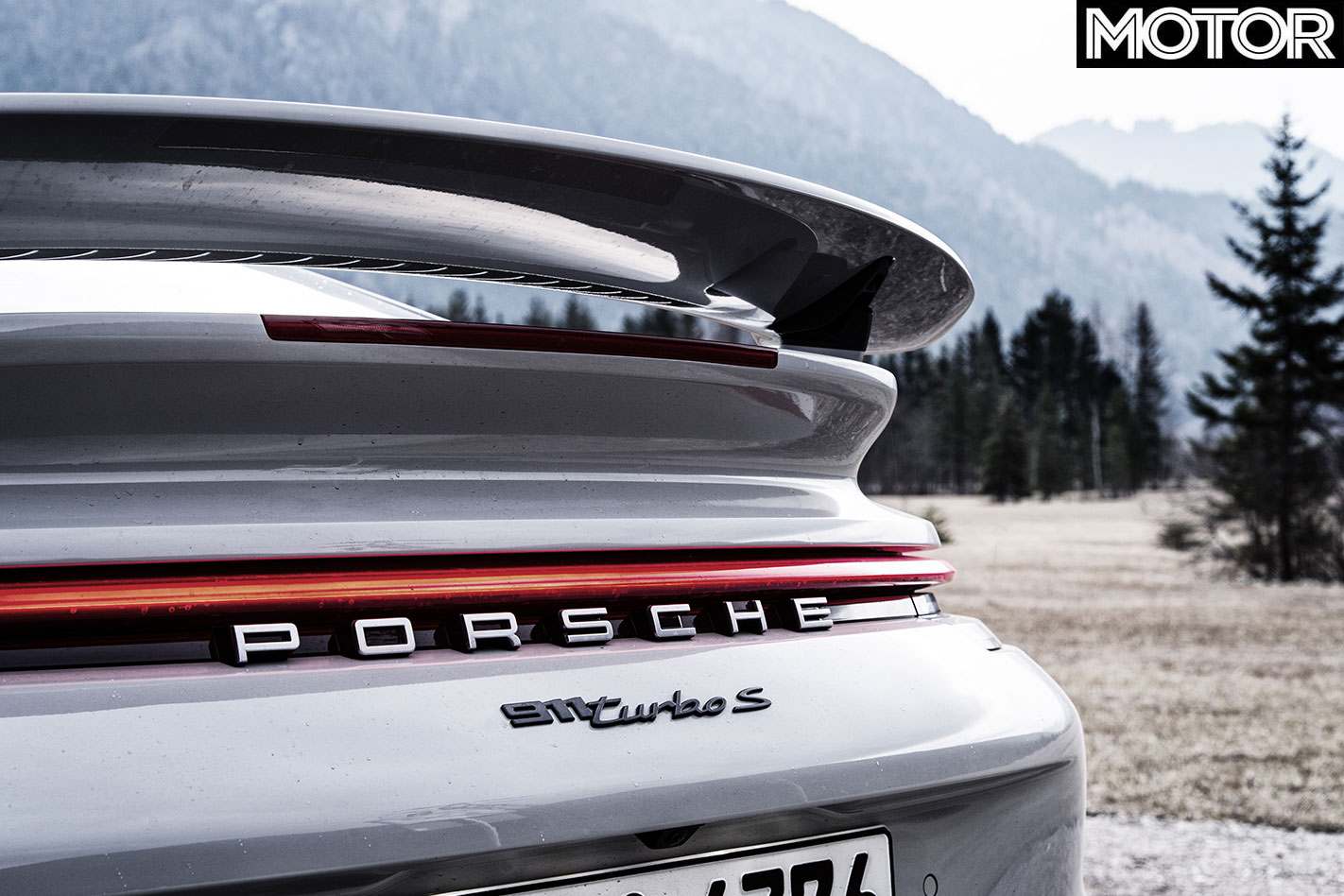
Body: 2-door, 2+2-seat coupe Drive: all-wheel Engine: 3745cc flat-6cyl, DOHC, 24v, twin-turbo Bore/stroke: 102.0 x 76.4mm Compression: 8.7:1 Power: 478kW @ 6750rpm Torque: 800Nm @ 2500-4000rpm Weight: 1640kg Transmission: 8-speed dual-clutch Power-to-weight: 291kW/tonne Suspension: struts, coil springs, adaptive dampers, active anti-roll bar (f); multi-links, coil springs, adaptive dampers, active anti-roll bar (r) L/W/h: 4535/1900/1303mm Wheelbase: 2450mm Tracks: 1583/1600mm Steering: electrically assisted rack-and-pinion, rear-wheel steer Brakes: 420mm ventilated/drilled carbon-ceramic discs, 10-piston calipers (f); 390mm ventilated/drilled carbon-ceramic discs, 4-piston calipers (r) Wheels: 20 x 9.0-inch (f); 21 x 11.5-inch (r) Tyres: 255/35 ZR20 (f); 315/30 ZR21 (r); Pirelli P-Zero Price: $473,900 PROS: Ridiculous speed; superb dynamics; practicality CONS: Massive price tag; ride comfort compromised Star Rating: 5 out of 5 stars

